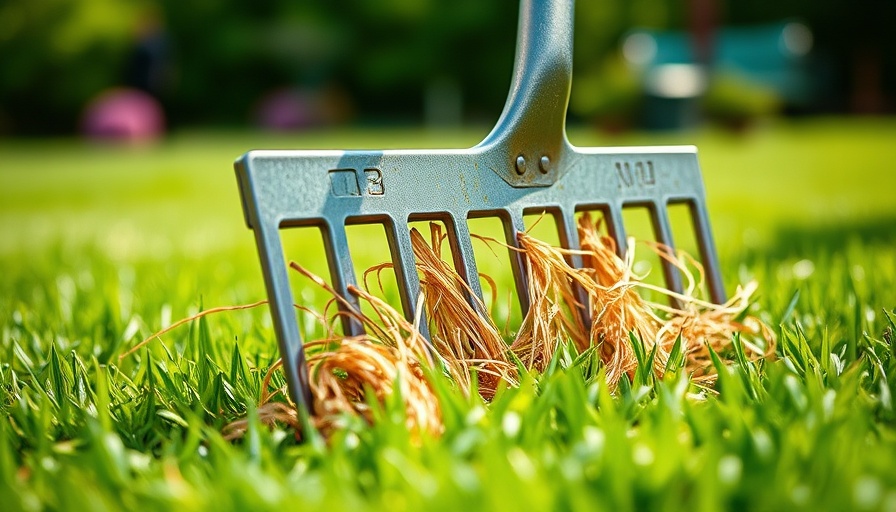
Dethatching: A Critical Step for Lawn Health
Your lawn is more than just a patch of grass; it’s a vibrant ecosystem that requires attention and care. One crucial task in maintaining a thriving lawn is dethatching—the process of removing the layer of dead grass, roots, and debris that can block nutrients from reaching the soil. This article will guide you through knowing when to dethatch, methods to do it, and the tools required.
Why Is Dethatching Necessary?
A thin layer of thatch can be beneficial, providing a cushion for grass roots. However, when the thatch exceeds 1/2-inch, it can suffocate your lawn. Signs that your lawn may need dethatching include uneven growth, dry patches, or a spongy feel when you walk over it. Addressing thatch build-up every couple of years, ideally in early spring or fall, can revitalize your lawn.
Choosing the Right Tools
Deciding how to dethatch your lawn often comes down to the size of your yard and your preferences. For smaller areas, a handheld dethatching rake is effective but labor-intensive. A powered dethatcher is best for larger areas, making the process quicker and easier. Renting such equipment can be an economical solution without the long-term commitment of storage.
Steps to Dethatch Your Lawn Like a Pro
1. **Mow Your Lawn**: Before you start dethatching, mow your lawn to about half its normal height. This minimizes potential damage and facilitates easier thatch removal.
2. **Using a Powered Dethatcher**: If you opt for a powered dethatcher, begin by preparing your yard—remove debris and mark any obstacles. Engage the dethatcher’s blades and make overlapping passes to thoroughly cover the area. Afterward, use a leaf rake to collect the thatch.
3. **Adjusting the Rake Angle**: When using a thatching rake, the angle of contact is critical. Adjust the angle to control the aggressiveness of the dethatching. Start with a slight angle and adjust as needed to ensure you aren’t harming healthy grass.
Future Insights: What Dethatching Means for Your Lawn's Long-Term Health
As the importance of sustainable living continues to grow, maintaining a healthy lawn can lead to a more vibrant ecosystem in your backyard. Dethatching contributes not just to the aesthetic beauty of your yard but is also essential for supporting wildlife, improving soil health, and conserving water. By understanding this aspect, homeowners can foster an environment that thrives.
Impact of Proper Lawn Care on Home Value
Investing time in tasks like dethatching can yield significant returns in your home’s value, too. Curb appeal is essential for property evaluations, and a lush, well-maintained lawn can create a positive first impression. As buyers increasingly seek homes with beautiful outdoor spaces, consistent lawn care can become an invaluable part of your property investment.
A DIY Success Story: Real-Life Experiences
Share your experience! One homeowner noticed remarkable changes in their lawn after regular dethatching. They expressed, "After dethatching, my grass grew thicker and greener. Plus, maintaining my yard feels rewarding!" Success stories like this remind us that good lawn care benefits both physical space and mental well-being.
Final Thoughts on Dethatching Your Lawn
Dethatching might seem like a daunting task, but understanding its importance and following a structured approach can simplify the process. As homeowners, taking proactive measures to care for our lawns not only connects us with nature but also allows us to enhance our living environment. So gather your tools and get started, and remember that every effort contributes to a healthier ecosystem.
Feeling inspired? Start your lawn care journey today! Share your dethatching tips and experiences for a chance to join our community of passionate homeowners.
 Add Row
Add Row  Add
Add 




Write A Comment